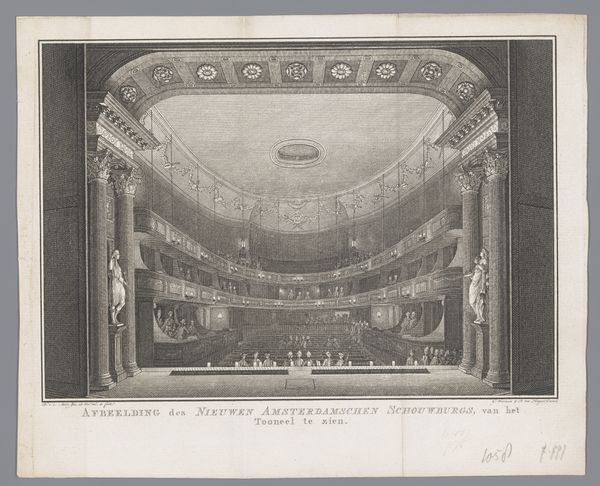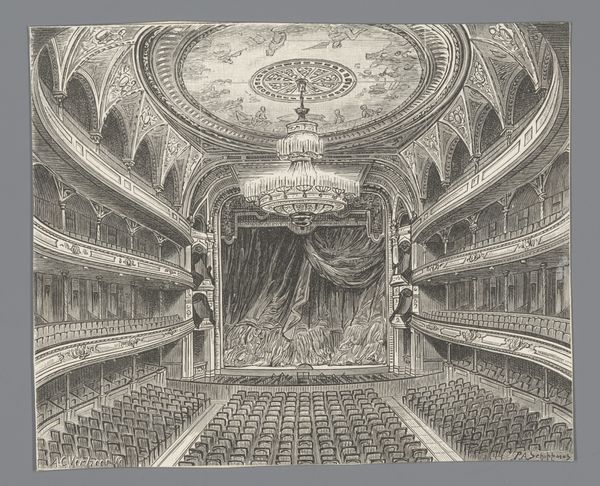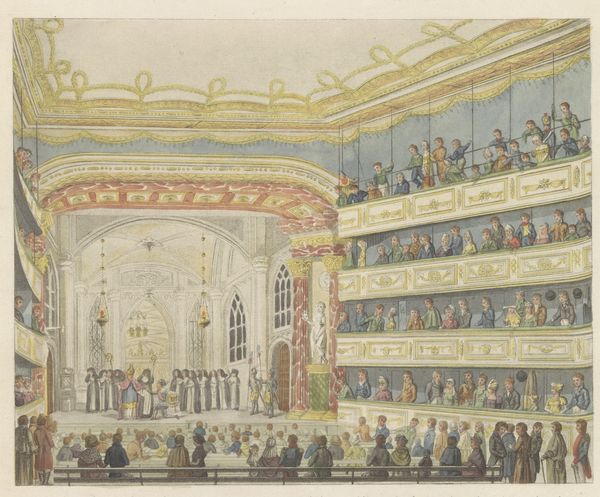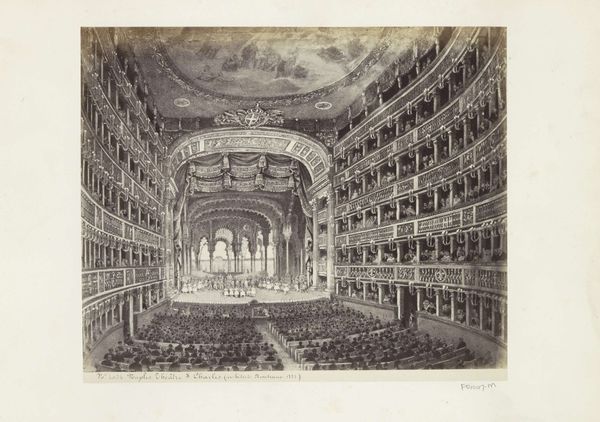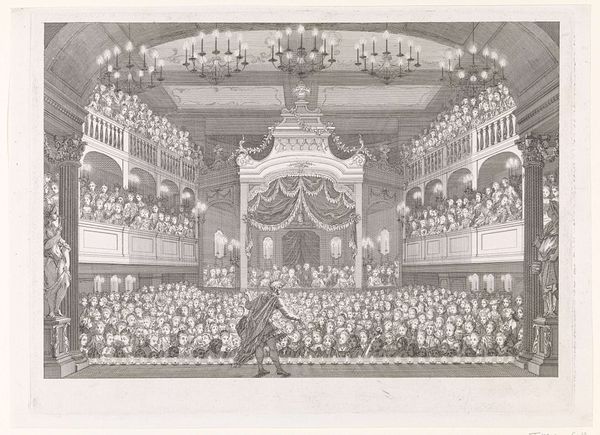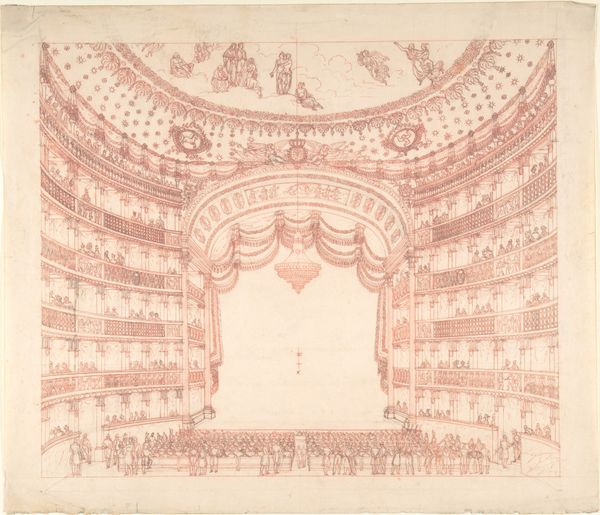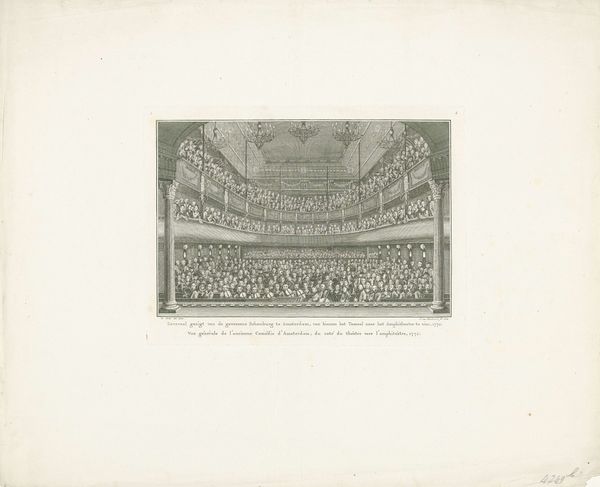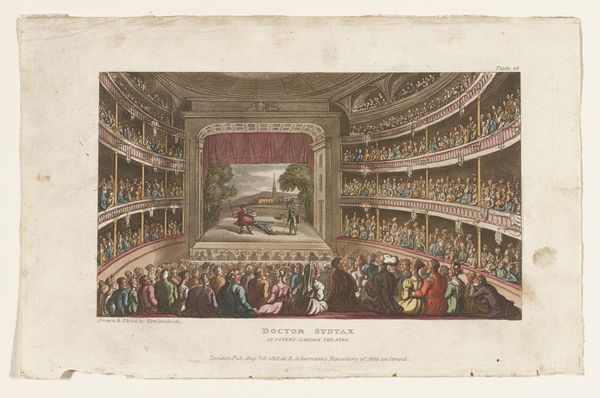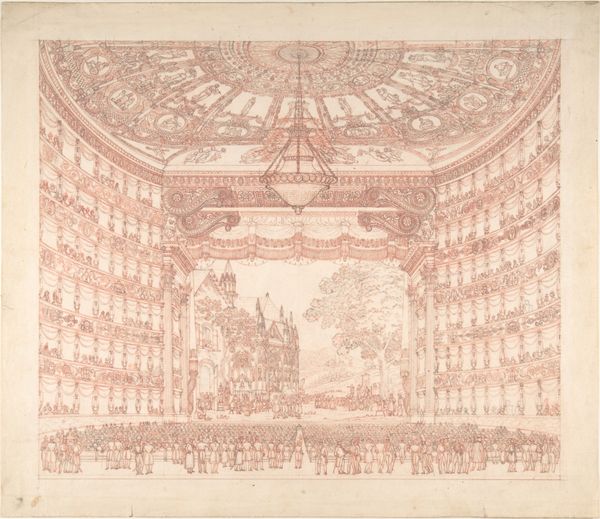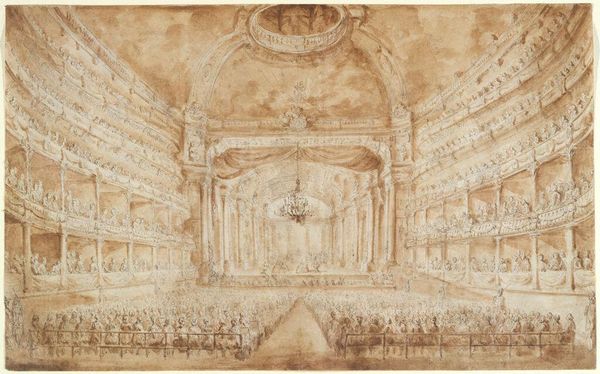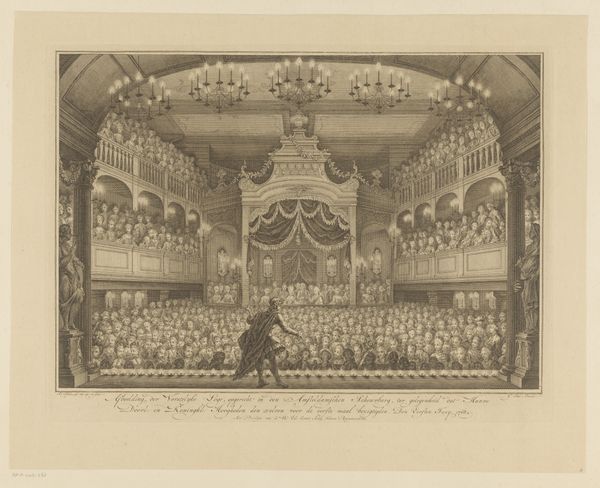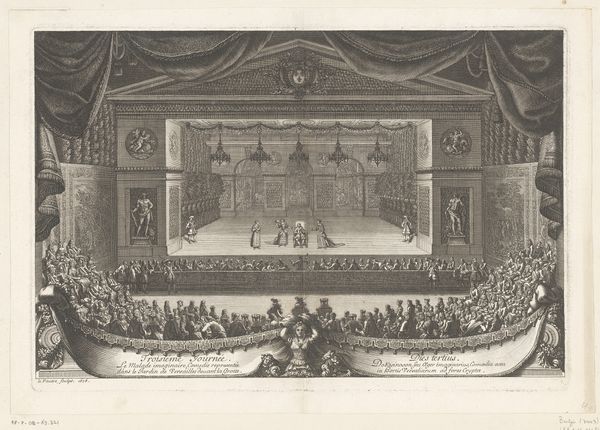
Interieur van het Teatro San Carlo te Napels, gezien vanaf het podium 1851 - 1883
0:00
0:00
Dimensions: height 198 mm, width 241 mm
Copyright: Rijks Museum: Open Domain
Curator: Looking at Achille Mauri's "Interior of the Teatro San Carlo in Naples, Seen from the Stage," dating roughly from 1851 to 1883, the immediate impression is of almost dizzying perspective. Editor: I'm struck by the sheer labor embedded in every element of this photographic print, not just in the careful composition but the manual process of image-making itself. You see it immediately—the density, the feeling that this isn’t a single moment captured, but a construction. Curator: Absolutely. The image seems almost impossible in its depth and complexity, no? The photograph pushes the viewer into a perspectival void; the balconies and the multitude of spectators repeat infinitely in layers. What of its Baroque antecedents? The eye strains to assemble order from the chaos. Editor: Indeed. Think of the class divisions etched into the very architecture. From the orchestra pit up to the gods, each level dictates a specific mode of seeing and being seen, a carefully regulated spectacle of consumption—not just of art, but of status. We're considering access here, privilege granted by wealth and influence which directly influenced materials utilized. The light fixtures alone represent complex engineering and the wealth needed to power such grand illuminating devices. Curator: Agreed. There’s a potent contrast, wouldn’t you say, between the theatrical artifice within the Teatro—the poised dancers at its heart—and the latent “realism,” a trace quality conferred via photography? But is it real? We are given a mediated, constructed impression—Mauri directs our gaze within and throughout the architecture itself. Editor: Exactly. It's this friction that compels me: the interplay of labor and the performance—labor in constructing the theater itself, and now we have performers providing their own labor, and, crucially, labor to make the image of the image! This work reveals social stratifications intrinsic to artistic creation. Who built the theater, who manages the theater, and ultimately who pays to view the theater all influence its meaning. Curator: I appreciate how your approach encourages one to ponder beyond the image itself, rooting its presence in history and culture. By investigating that which frames and underpins its formal qualities, it permits us to better appreciate the Teatro and photography as objects—and documents. Editor: And you show me how photographic image making as a staged construction reflects and even shapes reality. Viewing it through these dual prisms offers, perhaps, an enriching consideration.
Comments
No comments
Be the first to comment and join the conversation on the ultimate creative platform.
